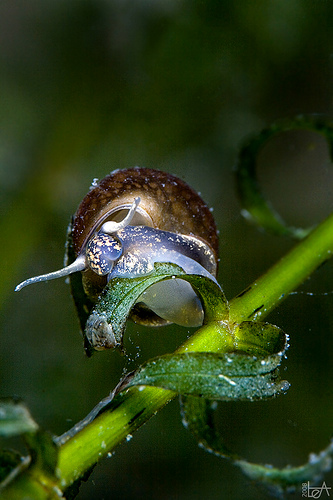Reproduction
The intermediate host, Bithynia tentaculata, is first penetrated by the miracidia of Cyathocotyle bushiensis. Within this first intermediate host the miracidia develops into a sporocyst. The sporocyst reproduces asexually, giving rise to multiple cercariae. These cercariae are released from the first intermediate host so they can move into the second intermediate host. The same snail or another B. tentaculata are then infected with the cercariae. When it encysts the second host it becomes a metacercariae (Hermann & Sorensen, 2009).
These infected hosts are then ingested by either Anas rubripes, Anas discors, or Anas carolinesis (Hermann & Sorensen, 2009). After six to eight hours the metacercariae make their way to the caeca of the ducks. A day or two later C. bushiensis worms finally attach to the mucosal lining (Gibson, Broughton, & Choquette, 1962). Three to five days after infection the parasite has developed into a mature adult and begins to produce as many eggs as possible (Hermann & Sorensen, 2009). On average one C. bushiensis worm can produce 1,595 eggs in one day (Hoeve & Scott, 1988). Fourteen days after the eggs are released in the fecal matter of the ducks they hatch and start from the beginning of the cycle again as miracidia (Trematodes of North America).
To learn more about how the reproductive cycle affects these organisms see the Interactions page.

